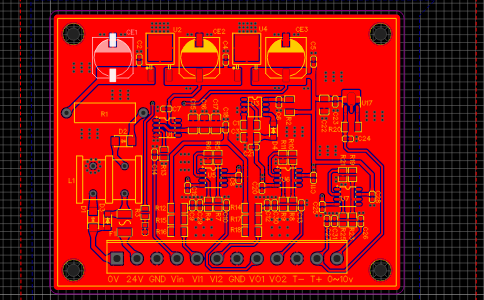The difference between PCB hard board and FPC soft board
Date:2023-06-12 14:03:40
PCB hard board and FPC soft board are two kinds of circuit boards commonly used in electronic products. They have obvious differences in appearance, materials, manufacturing process, application scenarios and so on. This article will introduce the definition, characteristics, manufacturing process and application scenarios of PCB hard board and FPC soft board in detail, so that readers can better understand the difference between these two kinds of circuit boards.

First, the definition of PCB hard board and FPC soft board
PCB hard board is a hard circuit board made of materials such as glass fiber and resin. It has high mechanical strength and stability and is suitable for electronic products that need to carry heavy components. FPC soft board is a flexible circuit board composed of flexible substrates and conductive materials. It has high flexibility and bendability, and is suitable for electronic products that need to be bent or folded.
Second, the characteristics of PCB hard board and FPC soft board
1. Features of PCB rigid board
PCB hard board has the following characteristics:
(1) High hardness and high mechanical strength, suitable for electronic products that need to carry heavy components.
(2) Good stability, not easy to deform, suitable for electronic products that require long-term stable operation.
(3) The manufacturing process is relatively simple and the cost is low.
2. Features of FPC soft board
FPC soft board has the following characteristics:
(1) Good flexibility, bendable and foldable, suitable for electronic products that need to be bent or folded.
(2) Light weight, small footprint, suitable for smaller electronic products.
(3) It has good electrical conductivity and can realize high-density wiring, which is suitable for electronic products that require high-density wiring.
3. The manufacturing process of PCB hard board and FPC soft board
1. The manufacturing process of PCB hard board
The manufacturing process of PCB rigid board mainly includes the following steps:
(1) Design the circuit diagram and PCB layout.
(2) Make PCB boards.
(3) Convert the circuit diagram into a conductive pattern on the PCB.
(4) Remove unnecessary copper foil by chemical corrosion, mechanical processing, etc.
(5) Drilling, plug-in, welding and other processes on the PCB board.
2. Manufacturing process of FPC soft board
The manufacturing process of FPC soft board mainly includes the following steps:
(1) Design circuit diagram and FPC layout.
(2) Make FPC base material.
(3) Convert the circuit diagram into a conductive pattern on the FPC board.
(4) Remove unnecessary copper foil by chemical etching, laser cutting, etc.
(5) Perform drilling, plug-in, welding and other processes on the FPC board.
4. Application scenarios of PCB hard board and FPC soft board
1. Application scenarios of PCB hard board
PCB hard board is suitable for electronic products that need to carry heavy components and need long-term stable operation, such as computers, mobile phones, TVs, etc.
2. Application scenarios of FPC soft board
FPC soft board is suitable for electronic products that need to be bent or folded, small in size, and require high-density wiring, such as tablet computers, smart watches, wearable devices, etc.
In short, PCB hard boards and FPC soft boards have obvious differences in appearance, materials, manufacturing processes, and application scenarios. When selecting a circuit board, it needs to be selected according to specific product requirements and application scenarios.
